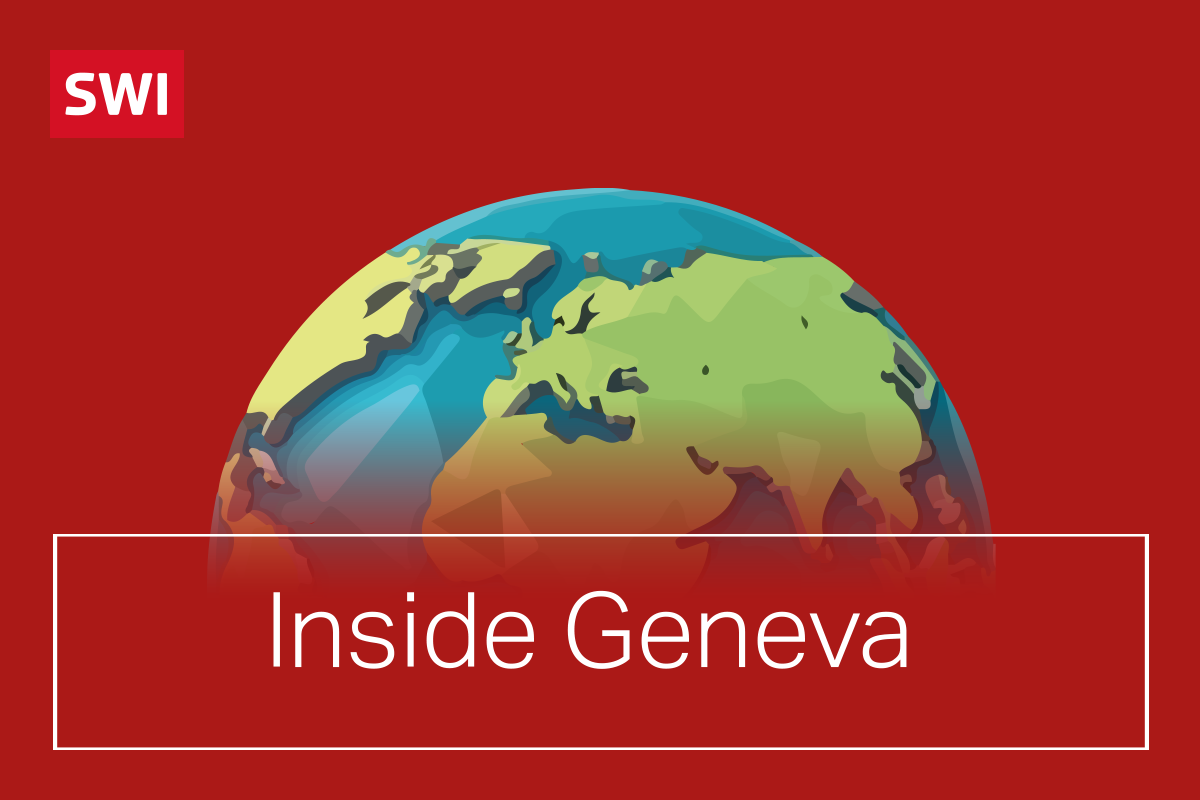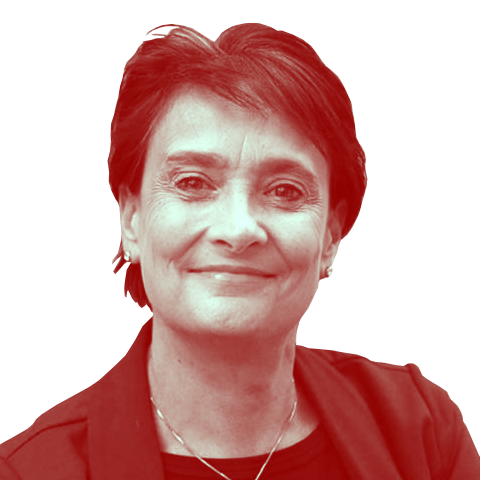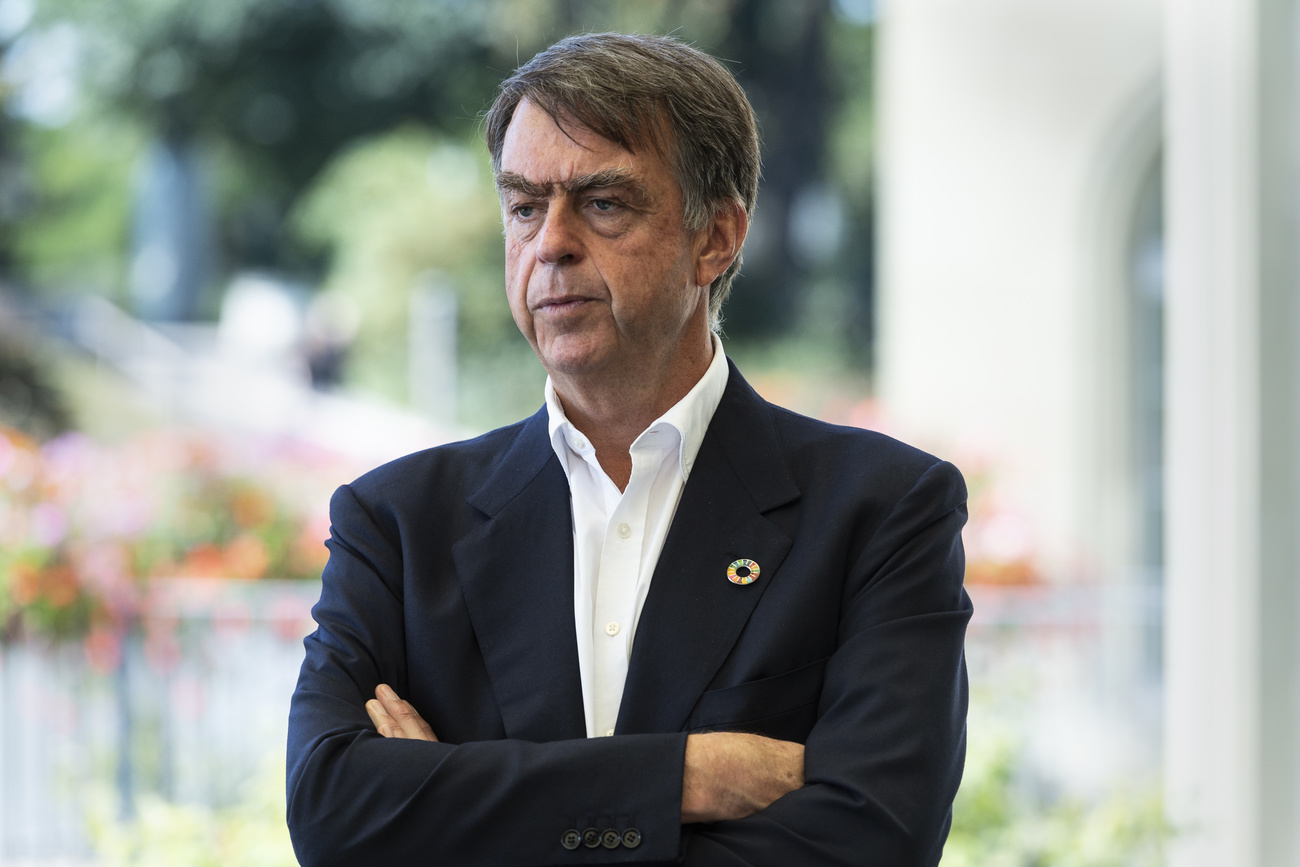How big is the nuclear threat?
There’s a saying in German “salonfähig”. It means a topic of conversation that has become acceptable in your living room, “salon”, or at your civilised dinner table. I’ve been thinking, recently, that the, for decades unthinkable and therefore pretty much unmentionable, prospect of nuclear war has now become an unwelcome guest in our salons.
When Vladimir Putin reminded the West that Russia was a nuclear power and then put his nuclear weapons on high alert, we all began to wonder, could this be possible? Is he bluffing? Just how bad would a nuclear strike be?

More
Inside Geneva: What is the nuclear threat?
That topic has now made its way into the Inside Geneva studio, and is the subject of this week’s podcast. To discuss the potential threat, the consequences and possible retaliation of a nuclear strike by Putin, I’m joined by Alicia Sanders Zakre of the International Campaign to ban Nuclear Weapons, Dr Ruth Mitchell of International Physicians for the Prevention of Nuclear War, and our regular analyst Daniel Warner.
An interesting perspective comes from Warner, because he is old enough – just – to remember the Cuban missile crisis in 1962, when the then Soviet Union’s stationing of ballistic missiles in Cuba brought the world to the brink of nuclear conflict.
“It was a moment when the two great superpowers confronted each other, with the possibility of nuclear war,” he tells Inside Geneva. “Those thirteen days are engraved in the memory of people who lived through that.”
Mutually assured destruction
Luckily for us all, common sense prevailed, and the world drew back from what came to be known as “MAD”, mutually assured destruction. The topic of nuclear war disappeared from our living rooms for twenty years, until the United States decision to site nuclear cruise missiles, often regarded as first strike weapons, in Europe.
Then, my mother demonstrated at Greenham Common, one of the proposed sites in Britain, and I, impressionably young, read with mounting horror and sleepless nights, the government’s laughingly entitled “Protect and Survive” pamphlet, which advised citizens to build nuclear shelters inside their homes using kitchen doors and sandbags.
Then came those famous summits, one of them right here in Geneva, when US President Ronald Reagan met Soviet leader Mikhail Gorbachev. The two men got on, and they agreed, bit by bit, a process of nuclear disarmament. Although that process is now stalled, the nuclear threat did recede in the 1980s, and we stopped thinking – and talking – about it.
But now it’s back in our conversations. As Zakre reminds us on Inside Geneva, Putin’s veiled threat is “the reality of nuclear deterrence, that there is a nuclear armed country that can hold the rest of the world hostage.”
One of the risks, Mitchell believes, of even threatening a nuclear strike, and getting us all to talk about it, is that “we see an erosion of the stigma of using nuclear weapons.”
Short memories?
Is the risk also heightened by the fact that nuclear weapons have only been used twice, and that was almost 80 years ago, on the Japanese cities of Hiroshima and Nagasaki? Perhaps our collective memories are too short to really comprehend just what a nuclear weapon can do?
Mitchell, who has worked with the survivors of Hiroshima and Nagasaki, is keen to remind us. “Blast, high velocity projectile, trauma, burns, including bodies just melting into the ground.”
That, she adds, is just in the first few seconds. After that there is radiation sickness, and generations of genetic harm.
One of the misconceptions about the current debate, both Zakre and Mitchell tell Inside Geneva, is the idea that a tactical nuclear strike by Russia, on Ukraine for example, would be small, confined even to just the battlefield. Probably, I have heard people say, we would all be fine, especially here in Switzerland, with all our nuclear bunkers.
But the atomic bombs used on Hiroshima and Nagasaki were around 15 and 20 kilotonnes. They killed at least 100,000 people immediately, tens of thousands more in the weeks afterwards. Many of today’s “tactical” nuclear weapons are much larger, some up to 100 kilotonnes.
“We know there is no small nuclear weapon” insists Zakre. “All nuclear weapons have devastating, lasting, generational humanitarian consequences.”
Who and how many?
Today, there are an estimated 12,000 to 13,000 nuclear weapons on our planet. The United States and Russia between them own more than 90% of them, then there is France, the UK, China, Pakistan, India, Israel, and, we believe, North Korea.
The International Campaign to Ban Nuclear Weapons, and International Physicians for the Prevention of Nuclear War, both believe these weapons should be totally forbidden, destroyed, and never made again.
Both organisations have been awarded the Nobel Peace Prize over the last few years, and their campaigning resulted in last year’s UN Treaty on the Prohibition of Nuclear Weapons. No surprise, the nuclear powers have not signed the treaty, but smaller ones, wary of the danger of nuclear conflict, have. The International Committee of the Red Cross was also a big supporter; it does not believe any use of a nuclear weapon could be compatible with the Geneva Conventions.
But getting rid of nuclear weapons completely always seems to elude us, and analyst Warner tells Inside Geneva he does not think it is, right now at least, “a realistic prospect.”
So where does that leave us when it comes to the threat from Russia? Warner points out that there has been some communication between US and Russian defence and intelligence chiefs, which could mean a more sensible dialogue is taking place away from Putin’s front of camera threats.
But neither Zakre nor Mitchell think that is much comfort. Zakre fears any use of nuclear weapons would escalate into something none of us would survive – as she points out, the countries with nuclear weapons base their strategies primarily on second strike retaliation.
Ruth, with her long medical experience, also argues that no human being, however calm and rational, should ever really be trusted with a nuclear weapon. Stress (and what could be more stressful than the possibility of your enemy launching a nuclear strike at your country?) can cause people to behave in unpredictable and risky ways.
Mitchell’s warning is stark: “either we get rid of nuclear weapons, or they get rid of us.”

In compliance with the JTI standards
More: SWI swissinfo.ch certified by the Journalism Trust Initiative











You can find an overview of ongoing debates with our journalists here . Please join us!
If you want to start a conversation about a topic raised in this article or want to report factual errors, email us at english@swissinfo.ch.